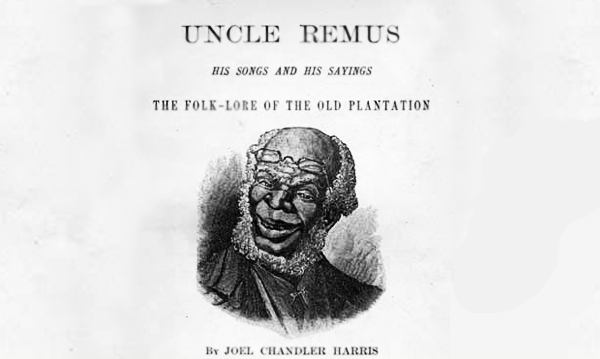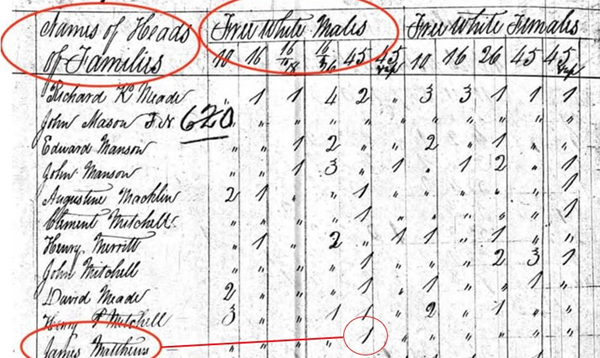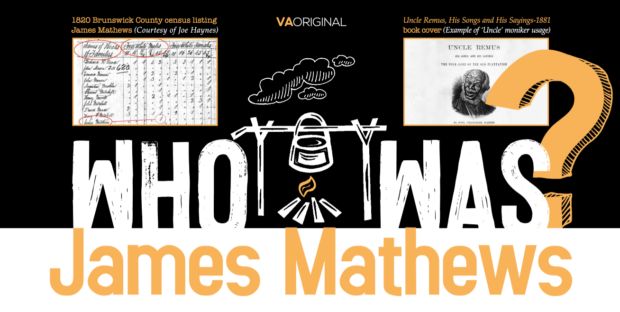Article by Debra Freeman and Fitz
Brunswick stew is a wildly known dish – the combination of tomatoes, beans, chicken, corn, potatoes, and seasonings is not an uncommon sight on menus in restaurants throughout the south. Fortunately, through documents and historical records we know the creator of the stew is James “Jimmy” Matthews. There is even a historical marker in Brunswick County that bears his name as the creator of the stew.
While there is no debate in Virginia concerning James Matthews’ contributions to Southern food, there is little known about his life, and there are two contrasting ideas on if he was an enslaved African- American or if he was white. We felt it prudent to show both sides of the argument to allow readers to make their own conclusions.
There are some clues that could point towards Matthews being African-American. First, Matthews is referenced as “Uncle Jimmy Matthews” – in the south in the 1800s, uncle is a moniker often used to refer to older enslaved African-American men. Additionally, his job title was regularly listed as retainer, which is a word that referred to an employee or an enslaved person who was a body servant in nineteenth-century Virginia. The Virginia state resolution which proclaims the first Brunswick Stew was prepared in the commonwealth references the creator as an enslaved man named Jimmy Matthews.

Uncle Remus, His Songs and His Sayings-1881 book cover (Example of ‘Uncle’ moniker usage)
James Beard winning author Michael Twitty asks, “why was he the faithful ‘uncle’ during slavery, but after, a genius white man?” He also references first person narratives that mention Matthews using a slave dialect.
Next, Dr. Arlene Paige Maclin, an African-American born in Brunswick County who has a doctorate in theoretical solid state physics from Howard University, wrote as part of her review of Joe Haynes’ book Brunswick Stew: A History that Matthews was her maternal great-grandfather. She also mentions that his son George lived on Haskins’ plantation as well. Maclin writes, “our family history is intrinsically tied to the history of Brunswick Stew, which has been intrinsically tied to the controversial history of Brunswick Stew.”
————————————————–

Jumpstart your culinary career now! chefva.com
————————————————–
However, Joseph R. Haynes, author of Brunswick Stew: A Virginia Tradition has found evidence which contradicts this. He has found a listing for James Matthews in the 1820 census, a white man who lived alone and was between 26 and 44 years old. According to records, he lived at Mount Donum in Brunswick County, Virginia, and was referenced as a retainer of Dr. Creed Haskins. Haynes writes that, “by 1828, he was regularly cooking the stew at picnics and public gatherings, which gained him a stellar reputation as a squirrel stew master.”

1820 Brunswick County census listing James Mathews (Courtesy of Joe Haynes)
Haynes also argues that in written documents, Matthews’ race is not mentioned, which is typically indicative of a white person, as during this time period an African-American’s race was usually used as a descriptor. Matthews is mentioned as a veteran of the War of 1812 and as a creator of the stew in a letter published in an 1886 edition of the Petersburg Index-Appeal. In 1907, in a well documented series of letters published by the Brunswick County, Virginia Board of Supervisors, Matthews is also mentioned by name as the originator of the stew. In either case, his race is not mentioned.
Although the debate may never definitely be resolved, we are thankful we can reap the benefits of Brunswick stew.







No Comments